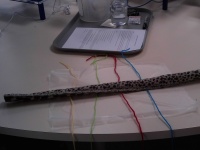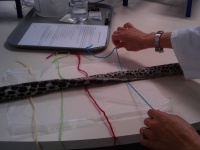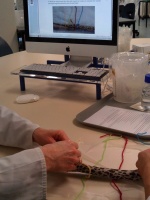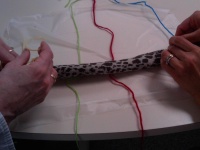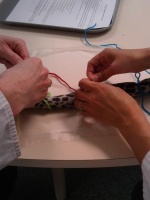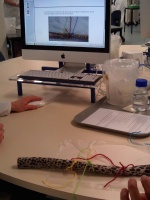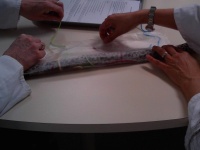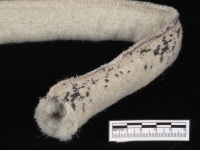GutTube
A simple rectangle of fun fur becomes a gut tube for first year health science students to understand how peristalsis can move food (marbles) from one end to the other. Plastic film and coloured wool simulate the gut mesentery containing blood vessels and nerves.
Production Information
Long rectangles (80mm x700mm) were cut from artificial fur fabric. The two long edges were sewn together and overlocked, with the fur on the inside. The ends were left open so that marbles could be introduced. Plastic cling wrap was used to simulate the gut mesentry, with coloured yarn to simulate arteries, veins, lymphatics and nerves within the mesentry.
Creators: Dr Ruth Napper, Dr Rebecca Bird and Fieke Neuman. All from Department of Anatomy, University of Otago.
Keywords: Teaching, Anatomy, Gut, Peristalsis, Mesentry, Science, Biology
This work is licensed under a Creative Commons Attribution-NonCommercial-ShareAlike 4.0 International License


